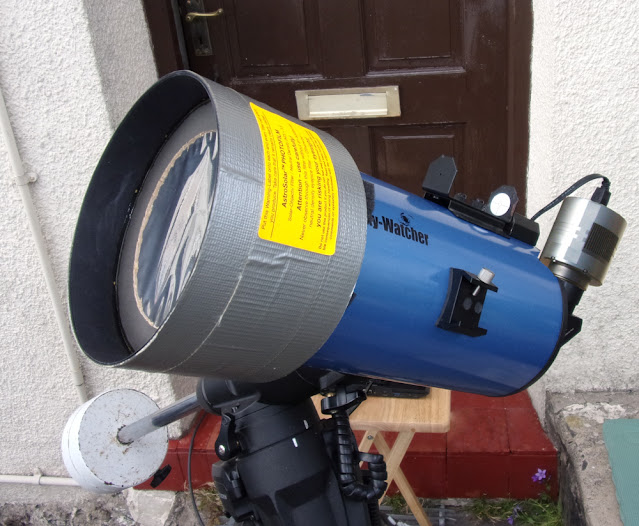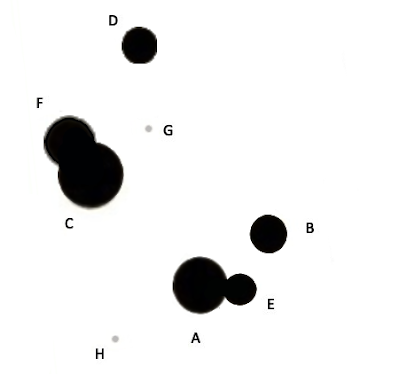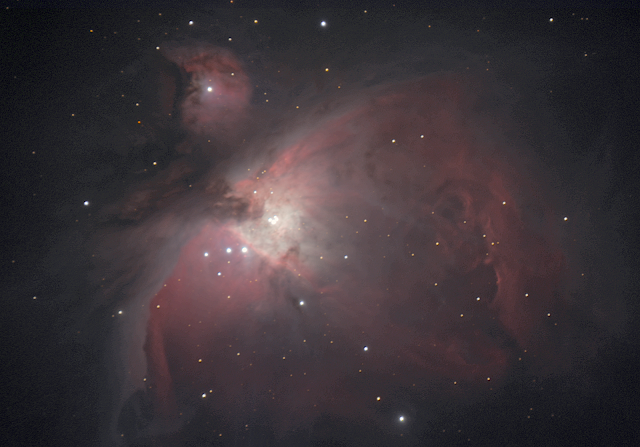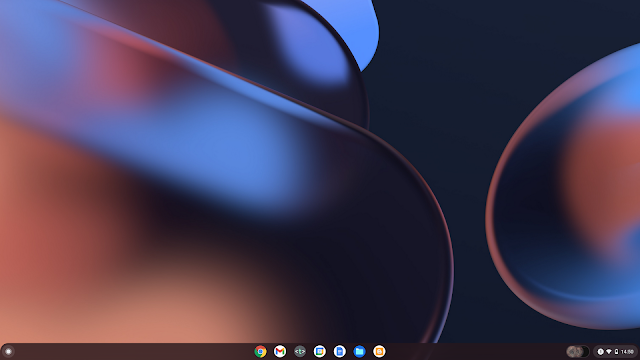Selected SVBONY cameras for solar imaging.
The cameras examined here are the SV305M Pro 12 bit monochrome CMOS camera and the SV405CC OSC TEC Cooled 14 bit CMOS camera.
SV405CC
The SV405CC was placed at the Cassegrain focus of a Skymax127 Maksutov mounted on a Celestron AVX mount. The telescope was fitted with a photographic grade Baader solar filter and the camera was fitted with a Baader Ca K-line filter. AstroDMx Capture was used to capture two overlapping SER files with the camera in mono mode.
Screenshots of AstroDMx Capture saving the overlapping 2000-frame SER files at maximum resolution of 4144 x 2822
The best 1000 frames from each SER file were stacked in Autostakkert! The resulting overlapping images were stitched into a 2 pane mosaic using Microsoft ICE. The resulting mosaic was wavelet processed in Registax 6, post-processed and colourised in the Gimp 2.10.30.
Ca K-line image of the Sun
Active regions as well as regions of high magnetic flux in the chromospheric network can be seen in the image.
The use of a long focal length telescope matched the image scale of the large sensor in the camera and worked well as a solar imager.
This camera has, with appropriate telescopes and filters, proved itself to be a versatile, Solar, Lunar and Deep Sky imager.
SV305M Pro
This monochrome HD CMOS camera was used in conjunction with three telescopes to explore its potential as a solar imager.
The SV305M Pro was fitted with a Baader Ca K-line filter and placed at the focus of a 66mm APO refractor, fitted with a Baader visual solar filter.
AstroDMx Capture was used to capture two overlapping 2000-frame SER files.
The best 75% of the frames in the SER files were stacked in Autostakkert! The two resulting images were stitched into a two-panel mosaic using Microsoft ICE, wavelet processed in Registax 6, post-processed and colourised in the Gimp 2.10.30
Ca K-line solar image
The SV305M Pro was placed at the focus of a Solarmax II 60, BF15 H-alpha scope.
AstroDMx Capture was used to capture two overlapping 2000-frame SER files.
The best 75% of the frames in the SER files were stacked in Autostakkert! The two resulting images were stitched into a two-panel mosaic using Microsoft ICE, wavelet processed in Registax 6, post-processed and colourised in the Gimp 2.10.30
H-alpha solar image
Picture Window Pro 8 was used to merge the uncolourised Ca K-line and H-alpha images. The merged Ca K-line-H-alpha image was post-processed in the Gimp 2.10.30.
Overlapping 2000-frame H-alpha SER files were also captured at higher gamma to reveal the prominences.
The resulting images were combined in iMerge and processed in the Gimp
The combined Ca K-line-H-alpha image was merged with the prominences image and colourised in the Gimp.
This combined wavelength image reveals a considerable amount of structure in the chromosphere.
Using the SV305M Pro with a 2x Barlow and the Solarmax II 60, BF15 H-alpha scope avoiding Newton’s rings.
A ZWO tilter was used with the camera in conjunction with the Barlow to avoid Newton’s rings.
The tilting device can be seen between the camera and the Barlow.
AstroDMx Capture was used to capture a 5000-frame SER file of the active region AR2976-2975.
The best 50% of the frames in the SER file were stacked in Autostakkert! The resulting image was wavelet processed in Registax 6 and post-processed in the Gimp 2.10.30
AR2976-2975 in H-alpha light
There are no signs of Newton’s rings in the image.
Using the SV305M Pro with a dedicated CaK PST Ca K-line scope
AstroDMx Capture was used to capture overlapping 2000-frame SER files.
The best 75% of frames in the SER files were stacked in Autostakkert! The two resulting images were stitched into a two-panel mosaic. The resulting image was wavelet processed in Registax 6, post-processed and colourised in the Gimp.
The narrower bandpass of the CaK PST of 0.22nm revealed more details of the chromospheric network than the broader bandpass of 8nm of the Baader Ca K-line filter in conjunction with a Baader white light filter.
These investigations showed that both the SV405CC and the SV305M Pro make good solar imagers with the appropriate telescopes. The sensor of the SV305M Pro is far enough forward that the CaK PST can be brought to focus easily. In conjunction with the tilting device and a Barlow lens, Newton’s rings were completely avoided in these tests with the SV305M Pro.
AstroDMx Capture can be downloaded HERE.

.png)



















































